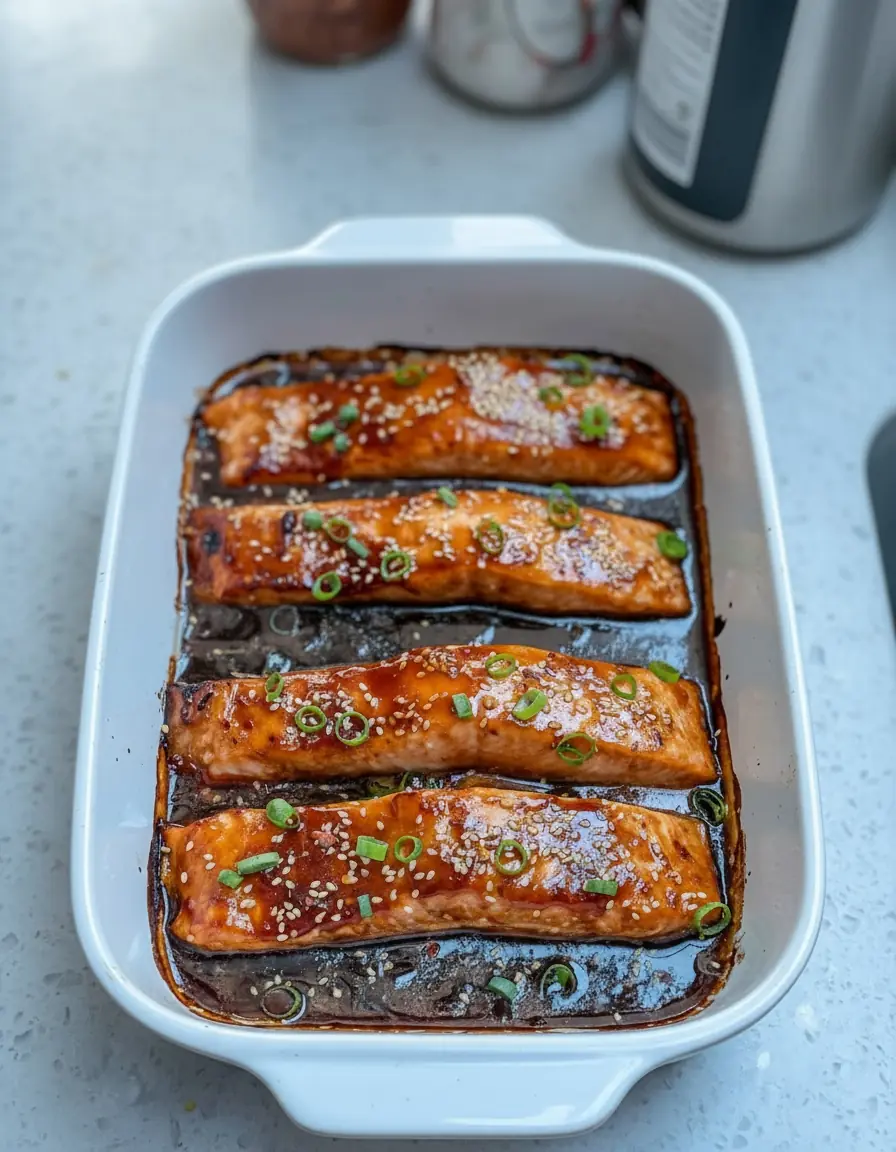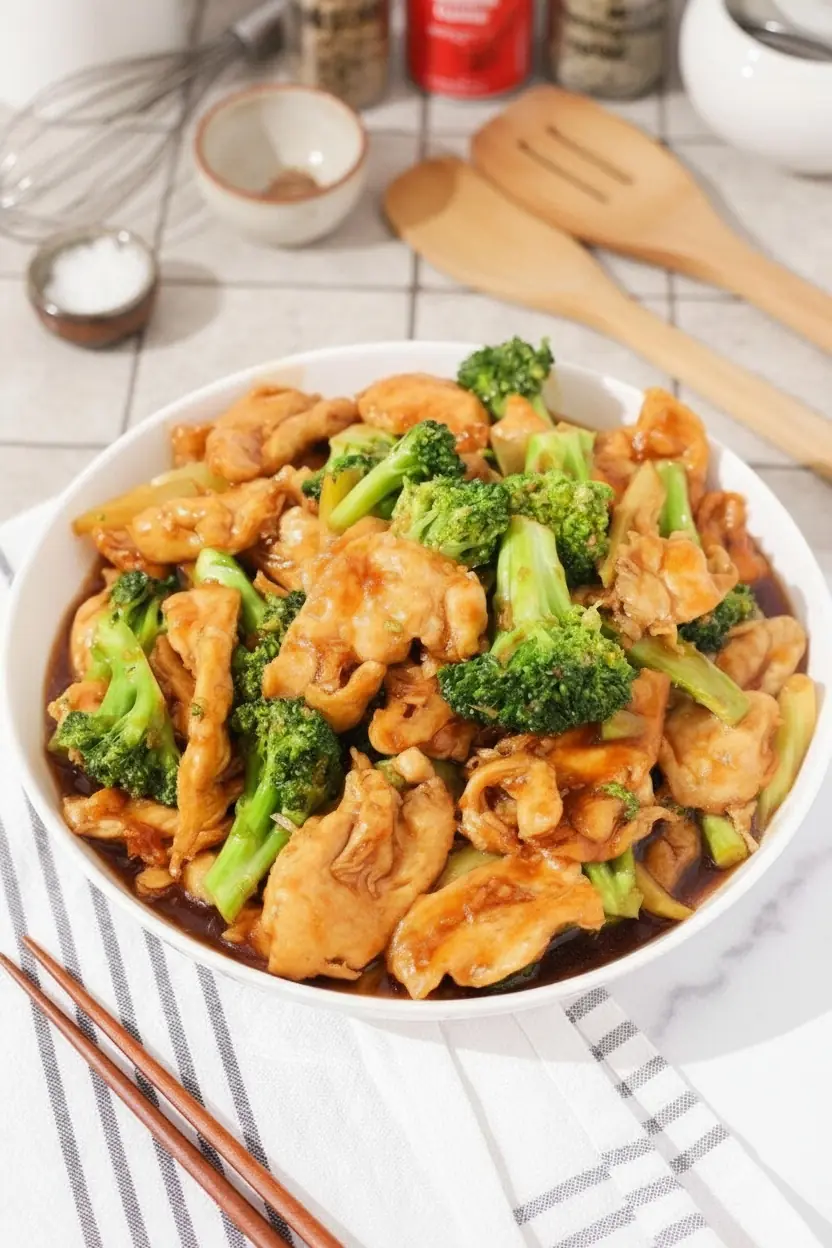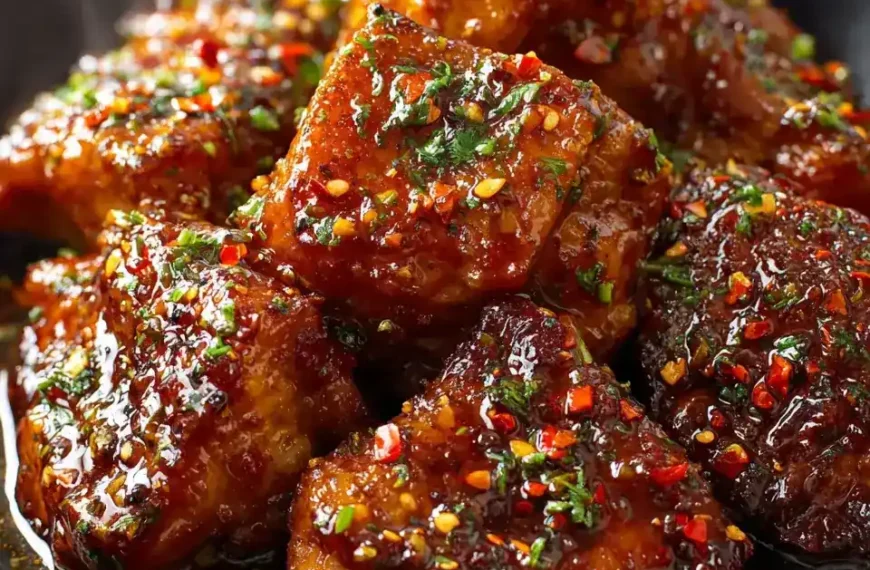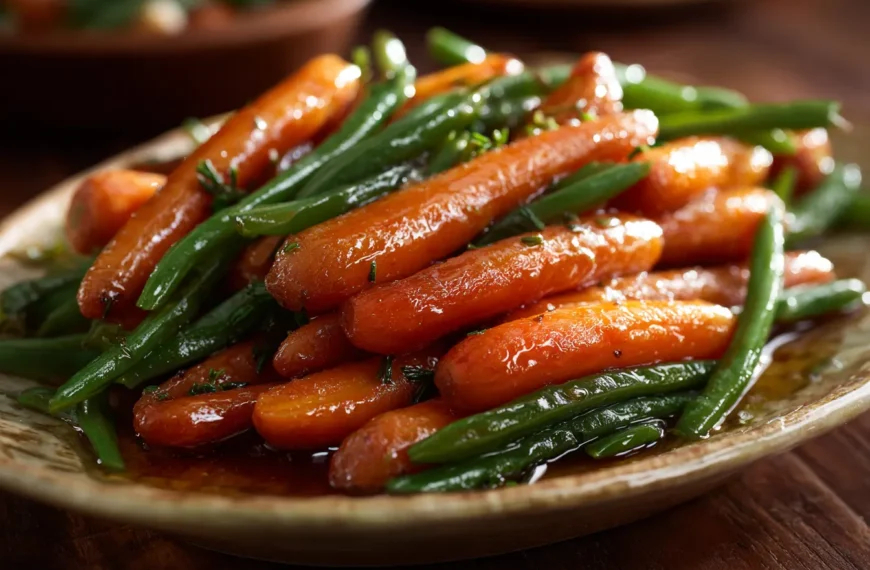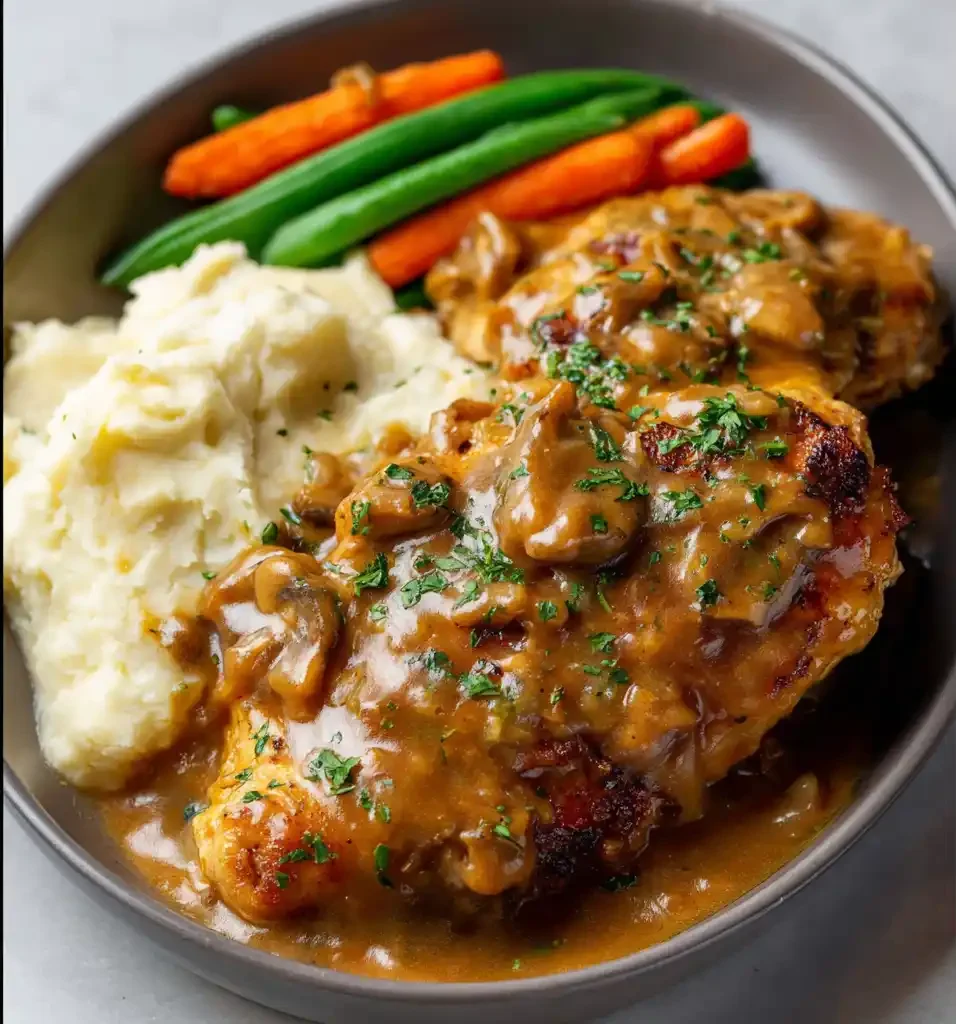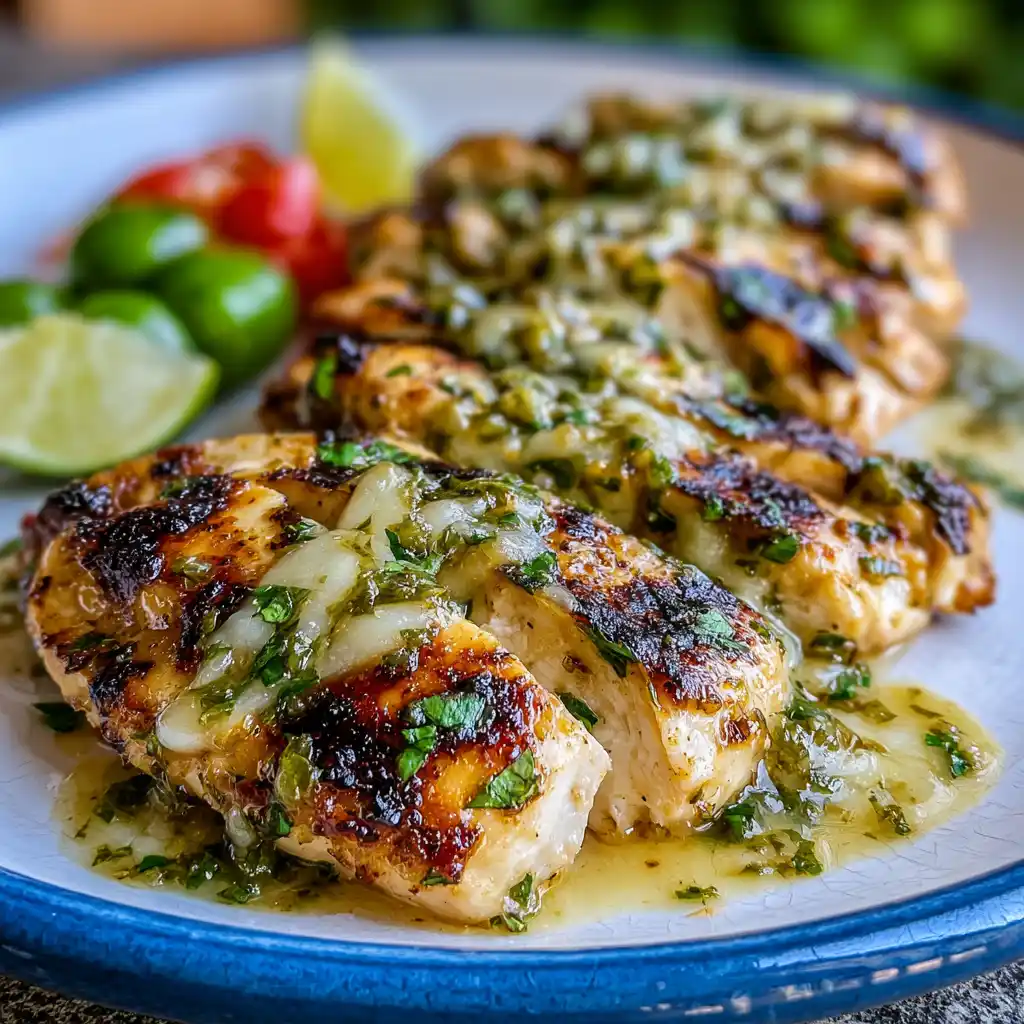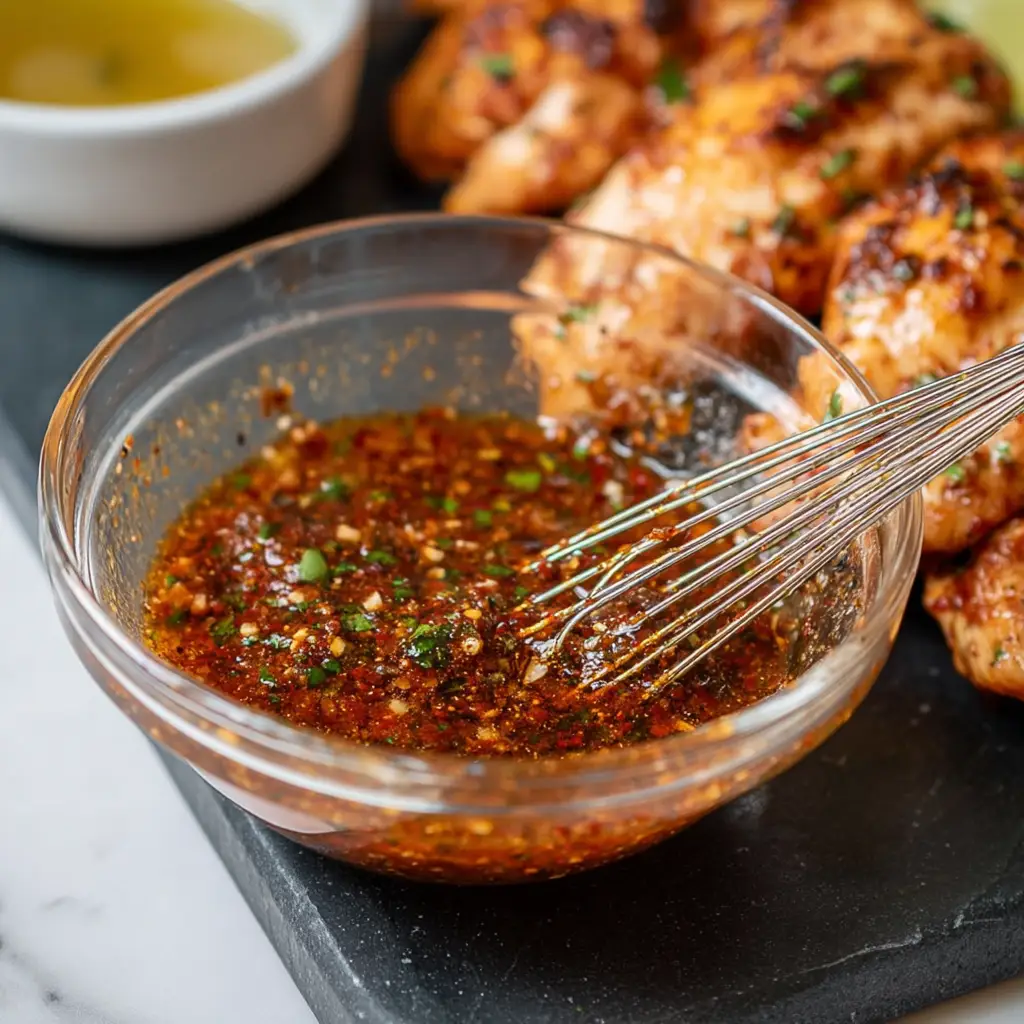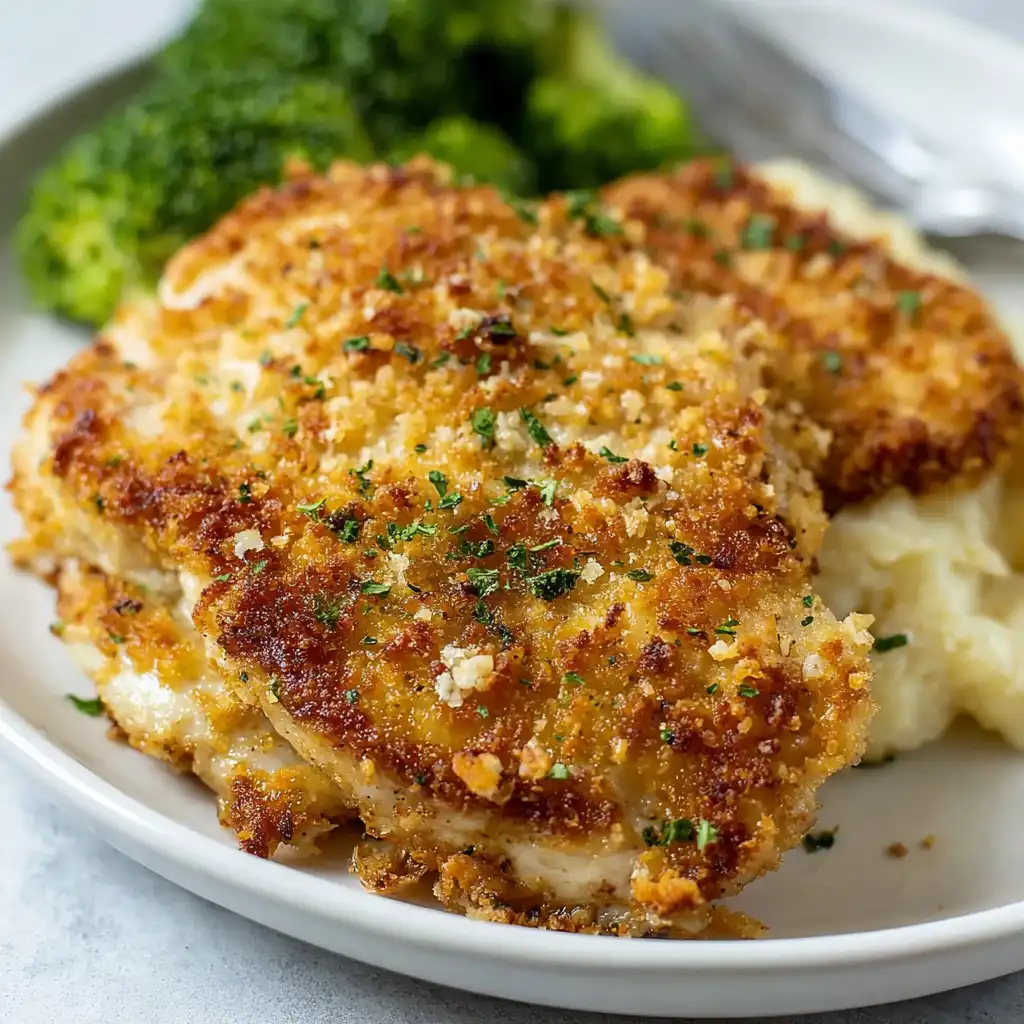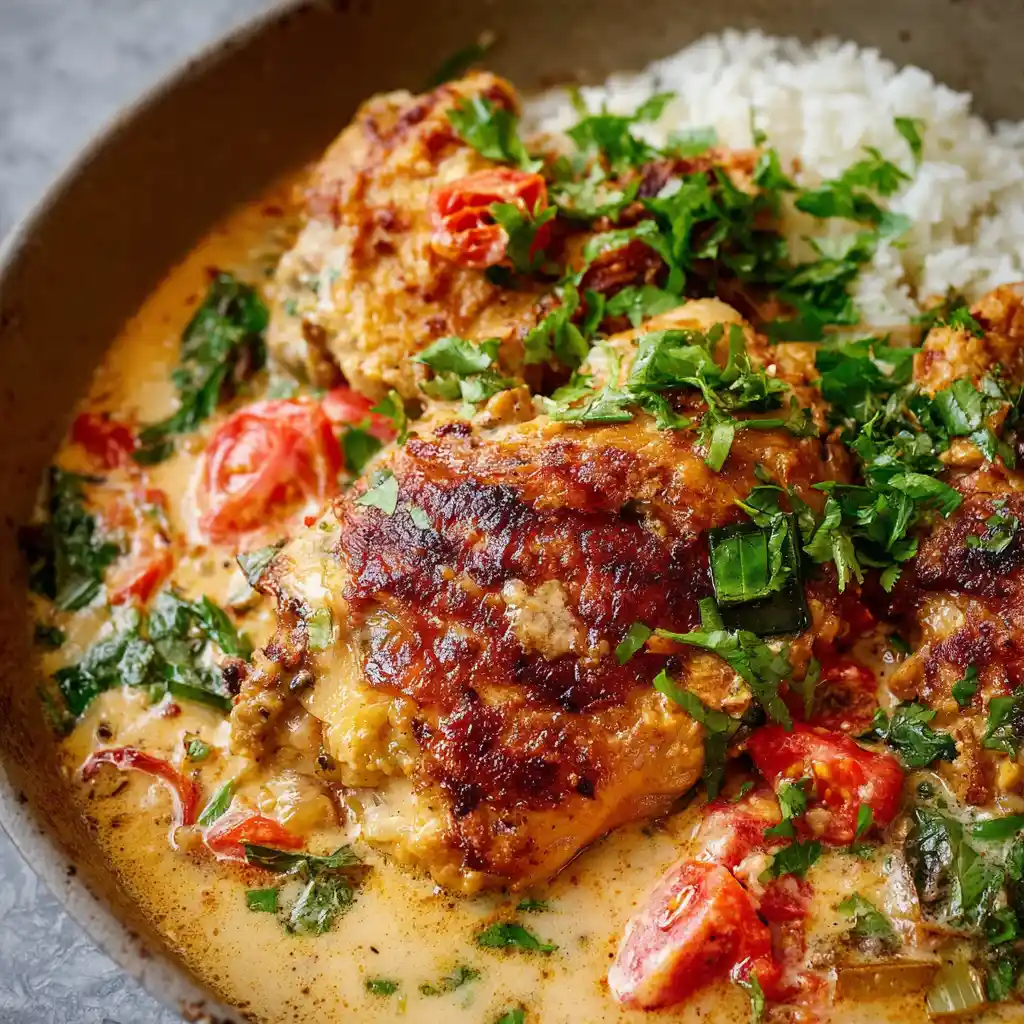I used to think making restaurant-quality salmon at home was impossible until one busy weeknight when I had nothing but salmon fillets and pantry staples. I desperately needed dinner on the table fast, so I threw together a quick teriyaki sauce and baked the fish, hoping for the best. When I pulled that pan from the oven, the salmon was perfectly flaky, the sauce had thickened beautifully, and the aroma filling my kitchen was absolutely incredible. My family devoured every bite and declared it better than any takeout we’d ever ordered. That night, baked teriyaki salmon became my go-to recipe for impressive dinners that require minimal effort. The combination of sweet honey, tangy citrus, and savory soy sauce creates a glaze that’s simply irresistible. Now I make this baked teriyaki salmon at least twice a month because it’s healthy, delicious, and ready in under 20 minutes. This recipe proves that weeknight dinners can be both nutritious and restaurant-worthy without spending hours in the kitchen.
Why This Recipe Stands Out
Healthier Than Takeout Alternatives
One of the greatest advantages of making baked teriyaki salmon at home is how much healthier it is compared to restaurant versions. This recipe uses fresh, wholesome ingredients without excessive sugar, sodium, or unhealthy oils that many restaurants add. Each serving provides 36 grams of protein and healthy omega-3 fatty acids that support heart and brain health. By baking instead of frying, you avoid unnecessary calories while keeping the salmon moist and tender. The homemade teriyaki sauce contains natural ingredients like fresh ginger, garlic, orange juice, and honey that you can pronounce and control. This baked teriyaki salmon delivers all the flavor you crave from takeout while nourishing your body with quality nutrition.
Quick and Simple Preparation
Unlike many fish recipes that require complex techniques or extensive ingredient lists, this baked teriyaki salmon comes together remarkably fast. The entire dish cooks in just 12 to 15 minutes in the oven, making it perfect for busy weeknights when time is limited. While the salmon bakes, you can prepare rice, vegetables, or a simple salad to complete your meal. The teriyaki sauce requires only whisking ingredients together in a bowl—no stovetop reduction or complicated steps. This straightforward approach to baked teriyaki salmon means anyone can achieve professional results regardless of cooking experience.
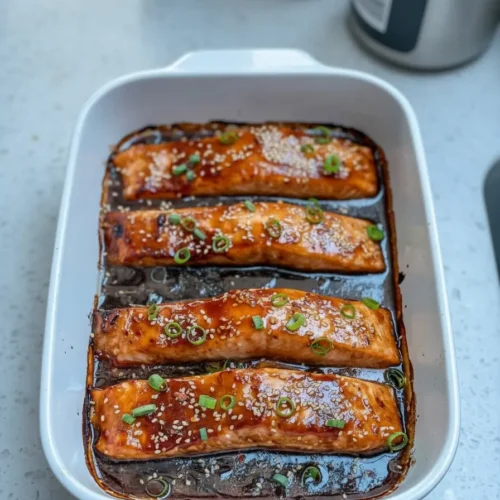
Baked Teriyaki Salmon
Ingredients
- ▢4 Skinless Salmon Fillets about 6 oz each
- ▢1 Green Onion sliced
- ▢1 tablespoon Sesame Seeds
- Teriyaki Sauce:
- ▢⅓ Cup Low-sodium soy sauce
- ▢¼ Cup Fresh orange juice
- ▢2-3 tablespoons Water
- ▢2 tablespoons Honey
- ▢2 Garlic Cloves minced
- ▢1 tablespoon Minced fresh ginger
- ▢1 teaspoon Chili Flakes or to taste
- ▢½ Lemon juiced
- ▢½ tablespoon Gluten-free flour
Instructions
- Preheat the oven to 400 degrees Fahrenheit.
- In a small bowl, whisk together all teriyaki sauce ingredients which are: ⅓ Cup Low-sodium soy sauce, ¼ Cup Fresh orange juice, 2-3 tablespoons Water, 2 tablespoons Honey, 2 Garlic Cloves (minced), 1 tablespoon Minced fresh ginger, 1 teaspoon Chili Flakes, ½ Lemon (juiced), and ½ tablespoon Gluten-free flour. Spray a baking dish with non-stick cooking spray and place the 4 Skinless Salmon Fillets in the dish.
- Pour the sauce over, then bake in the preheated oven for 12-15 minutes until cooked through and flaky.
- Once the salmon is cooked, remove from the oven and spoon over with the thickened sauce from the baking dish.
- Garnish with 1 tablespoon Sesame Seeds and 1 Green Onion (sliced). Enjoy!
Notes
Store leftovers in the fridge for up to 3 days
Freeze for up to 3 months
You may use honey, brown sugar, maple syrup, or agave
Use fresh ginger, fresh garlic cloves, and fresh lemon juice.
Use skin-on or skin-off salmon filets Calories: 316kcal | Carbohydrates: 16g | Protein: 36g | Fat: 12g | Saturated Fat: 2g | Cholesterol: 94mg | Sodium: 794mg | Potassium: 940mg | Fiber: 1g | Sugar: 11g | Vitamin A: 277IU | Vitamin C: 16mg | Calcium: 50mg | Iron: 2mg
Selecting Ingredients and Making the Sauce
Choosing Quality Salmon Fillets
The foundation of exceptional baked teriyaki salmon starts with selecting the best fish you can find. Look for fresh salmon fillets with firm flesh, bright color, and a clean ocean smell rather than any fishy odor. Wild-caught salmon typically has a richer flavor and firmer texture, though farmed salmon works beautifully and is often more affordable. Each fillet should be about 6 ounces for even cooking and proper portion sizes. Both skin-on and skinless fillets work equally well for this baked teriyaki salmon recipe, so choose based on your preference. If buying frozen salmon, thaw it overnight in the refrigerator and pat it completely dry before baking to achieve the best texture.
Creating Homemade Teriyaki Sauce
The secret to this baked teriyaki salmon lies in the homemade sauce that’s infinitely better than store-bought versions. Whisk together low-sodium soy sauce, fresh orange juice, water, honey, minced garlic, fresh ginger, chili flakes, lemon juice, and gluten-free flour in a small bowl. The flour acts as a thickening agent that helps the sauce cling to the salmon beautifully without needing stovetop reduction. Fresh ginger and garlic provide aromatic depth that dried versions simply can’t match. Orange and lemon juices add brightness and acidity that balance the salty soy sauce and sweet honey perfectly. The chili flakes contribute subtle heat that can be adjusted to your taste preference. This homemade teriyaki sauce for your baked teriyaki salmon takes less than five minutes to prepare yet tastes like you spent hours perfecting it.
Baking Technique for Perfect Results
Temperature and Timing Essentials
Getting the oven temperature and baking time exactly right ensures your baked teriyaki salmon emerges flaky, tender, and perfectly cooked. Preheat your oven to 400 degrees Fahrenheit, which creates enough heat to cook the salmon through without drying it out. Place your salmon fillets in a baking dish sprayed with non-stick cooking spray, then pour the teriyaki sauce over each fillet. Bake for 12 to 15 minutes, depending on the thickness of your fillets and your oven’s particular characteristics. The salmon is perfectly cooked when it flakes easily with a fork and reaches an internal temperature of 145 degrees Fahrenheit. This baked teriyaki salmon comes out moist, flavorful, and ready to serve in under 20 minutes total.
Finishing and Serving Your Dish
The final presentation of your baked teriyaki salmon elevates it from simple to restaurant-quality. Once the salmon finishes baking, remove it from the oven and spoon the thickened teriyaki sauce over each fillet to ensure maximum flavor. Garnish generously with sliced green onions and sesame seeds, which add color, crunch, and an authentic Asian-inspired touch. The green onions provide fresh, mild onion flavor while the sesame seeds contribute nutty depth and visual appeal. Serve your baked teriyaki salmon immediately while it’s warm and the sauce is still glistening. This dish pairs beautifully with steamed rice, stir-fried vegetables, or a simple Asian-inspired salad.
Storage and Flavor Variations
Storage and Reheating Tips
One of the best features of this baked teriyaki salmon is how well it stores for future meals and quick reheating. Keep leftover salmon in an airtight container in the refrigerator for up to three days, making it perfect for meal prep or quick lunches. When reheating, place the baked teriyaki salmon in a 350-degree oven for about 10 minutes until warmed through, which preserves moisture better than microwaving. Cold baked teriyaki salmon also makes an excellent addition to salads, grain bowls, or sushi rolls. For longer storage, freeze the cooked salmon for up to three months in freezer-safe containers. Thaw overnight in the refrigerator before reheating, and the quality and flavor remain excellent.
Creative Variations and Sweetener Options
While the classic version of baked teriyaki salmon is absolutely delicious, you can experiment with different sweeteners and flavor additions. Substitute brown sugar, maple syrup, or agave for the honey if you prefer different flavor notes. Try adding sesame oil to the teriyaki sauce for deeper, nuttier complexity that enhances the Asian flavors. Increase the chili flakes for a spicier version that brings heat to complement the sweet sauce. Add fresh pineapple juice to the sauce for tropical sweetness and brightness. Experiment with lime juice instead of lemon for a different citrus profile. This flexibility makes baked teriyaki salmon adaptable to your preferences and pantry staples.

Frequently Asked Questions
How do I know when my baked teriyaki salmon is done cooking?
The best way to check doneness is to look for flaky flesh that separates easily with a fork. The salmon should have a pale pink color throughout with no translucent spots remaining. Use an instant-read thermometer to verify the internal temperature reaches 145 degrees Fahrenheit, which is the safe temperature for cooked fish. Avoid overcooking, as salmon becomes dry when baked beyond this point.
Can I prepare the teriyaki sauce ahead of time?
Yes, you can whisk together the teriyaki sauce up to one day in advance and store it in an airtight container in the refrigerator. This advance preparation makes baked teriyaki salmon even more convenient for busy weeknights. Simply let the sauce come to room temperature before pouring it over the salmon and baking.
What’s the best way to prevent dry salmon?
The key to moist baked teriyaki salmon is not overbaking and using the teriyaki sauce to keep the fish hydrated. Don’t exceed the 15-minute baking time, and remember that the salmon continues cooking slightly after removal from the oven. The teriyaki sauce coating helps seal in moisture during baking.
Can I use frozen salmon for this recipe?
Yes, frozen salmon works perfectly for baked teriyaki salmon if you thaw it properly. Thaw frozen fillets overnight in the refrigerator, then pat them completely dry before baking. Avoid thawing at room temperature, which can promote bacterial growth.
Conclusion
This baked teriyaki salmon brings restaurant-quality flavor and nutrition to your weeknight dinner table in just 15 minutes. The homemade teriyaki sauce tastes better than any takeout version while containing ingredients you control and trust. With 36 grams of protein and healthy omega-3 fatty acids per serving, this dish nourishes your body while satisfying your taste buds. Whether you’re cooking for family or impressing guests, baked teriyaki salmon delivers impressive results every single time.
